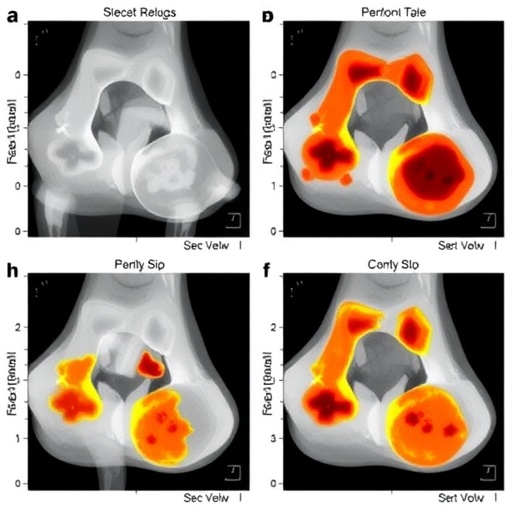Just as strep throat can run rampant in elementary schools, strangles, the "strep throat" of horses, caused by a different Streptococcus bacterium, Streptococcus equi sp equi, is highly contagious. Lymph nodes in the head and neck region become swollen and develop abscesses, resulting in nasal discharge and drainage from the throat. Though rarely fatal, strangles cases can range from mild to severe, and complications that impair eating and breathing can arise in some instances. Altogether, it's a disease that horse owners want to keep far from their stables.
Veterinarians have an important role to play not only in treating the disease, but also in ensuring that infected horses are kept away from other animals until they have fully recovered from the illness. This recovery is not always so clear cut, as many animals remain carriers of the bacteria even after they appear healthy.
To assist veterinarians, and owners, in understanding the most up-to-date clinical recommendations when it comes to treating strangles, Ashley Boyle, an associate professor of medicine at the University of Pennsylvania's School of Veterinary Medicine, took the lead in writing a new consensus statement, issued by the American College of Veterinary Internal Medicine, on treating, controlling, and preventing strangles in horses.
"From a practical standpoint, the consensus statement serves to advise all veterinarians on what we recommend as a way to treat and deal with the disease," Boyle says. "I'm an internist who sees this disease as a primary care doctor at the horse farms as well as a field researcher. The authors of the consensus statement are a collection of experts in the field of Streptococcal diseases in horses including veterinary microbiologists, epidemiologists, and veterinarians who research this disease, as well as internists who encounter the disease frequently."
Boyle coauthored the report with John Timoney of the Gluck Equine Research Center at the University of Kentucky, Richard Newton and Andrew Waller of Animal Health Trust in the United Kingdom, Melissa T. Hines of the University of Tennessee, and Ben Buchanan of Brazo Valley Equine Hospital in Texas.
The last consensus statement was issued in 2005; the lead author of that report was Corinne Sweeney, professor of medicine and associate dean at Penn Vet's New Bolton Center. Starting around 2012, Boyle began hearing from colleagues that it was time for an update. Sweeney suggested that Boyle take on the project.
Along with an international team of coauthors, some of whom had contributed to the earlier statement, Boyle set about reviewing information on prevention, treatment and control and finding where updates were necessary.
One of the key areas where the guidance has shifted in the new statement is how to determine when an animal is free of disease. This is a critical component of strangles control, as 10 to 40 percent of animals who have had the disease can remain carriers, able to pass on disease to other animals even when they appear healthy.
The previous consensus statement indicated a throat wash should be tested three times to be sure the horse was free of disease.
"But it was hard to get owners and clients to do that three times," Boyle says. "And multiple studies have shown that those three may not even be good enough."
In the new statement, Boyle and colleagues instead recommend "guttural pouch sampling," a technique that tests the fluid that sits in an area between a horse's ear and throat, akin to the human Eustachian tube, in combination with using an endoscope to visually assess the area for unruptured absesses.
"We're trying to encourage more primary care veterinarians to do this, even though it's time consuming, because this is how the disease perpetuates itself," says Boyle. "In the end it is easier, faster, and more effective than doing the three throat washes. That's one of our big take-home messages."
Another change is a shift away from considering bacterial culture to be the gold standard of diagnosis.
"We no longer consider this the gold standard," Boyle says, as horses with low levels of bacteria may still be carriers but not give a positive result on this test. The authors see DNA amplification technologies such as polymerase chain reaction (PCR) along with visualization of the guttural pouch as replacing culture as this standard.
"There is also a lot of work being done by my colleagues in Europe looking at genomic sequencing," she says. "At some point in the future we may be able to use this technology to trace from where an outbreak came."
The publication lays out best practices for quarantine and examination in order to prevent the spread of disease, and biosecurity protocols to reduce transmission in facilities where infected horses have been housed. It spells out treatment protocols, urging judicious use of antibiotics, and explains how to recognize, evaluate the risk for, and treat one of the more serious complications of strangles, an autoimmune reaction known as purpura hemorrhagica, which can be fatal. It also explores the pros and cons of strangles vaccines,the use of different blood tests that can measure previous exposure to disease and determine when it is safe to give vaccines..
While the consensus statement is aimed at veterinarians, Boyle says owners often read them directly, and can implement some of the recommendations. For example, horses are not thought to be contagious until 24 to 48 hours after the onset of fever.
"An owner can start thinking about monitoring their horses' temperatures if they suspect an outbreak, and isolate horses when they first spike a fever," Boyle says. "That way they can catch it right at the beginning and spare any other horses from getting sick."
Even though strangles is not typically deadly, it is a global problem and quite costly, as management protocols can be extensive.
"There are huge financial repercussions not only from dealing with the disease but from quarantining barns and screening potential carriers," Boyle says. "It's also a big problem in the population of rescued horses, as they often come from different locations and are housed in close quarters resulting in the spread of disease."
Boyle and her colleagues hope that the new guidelines will help veterinarians and owners navigate strangles cases more effectively, ideally mitigating the disease's health and financial costs.
###
The consensus statement was published in the Journal of Veterinary Internal Medicine. A.G. Boyle et al: Streptococcus equi Infections in Horses: Guidelines for Treatment, Control, and Prevention of Strangles-Revised Consensus Statement. Journal of Veterinary Internal Medicine 2018; Feb 9. doi: 10.1111/jvim.15043.
Media Contact
Katherine Unger Baillie
[email protected]
215-898-9194
@Penn
http://www.upenn.edu/pennnews
https://news.upenn.edu/news/new-guidelines-offer-vets-and-owners-latest-preventing-and-treating-strangles-strep-throat
Related Journal Article
http://dx.doi.org/10.1111/jvim.15043




